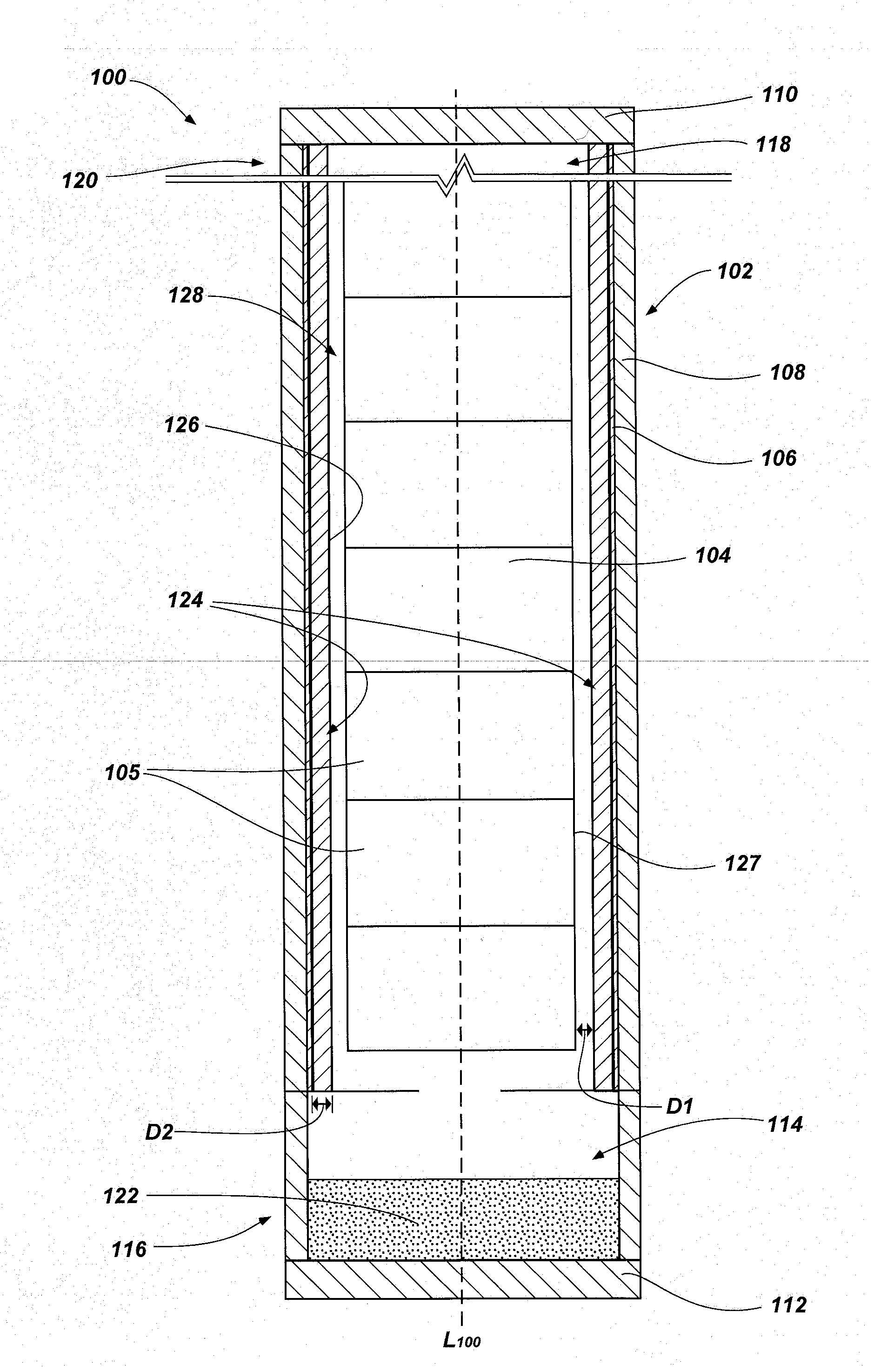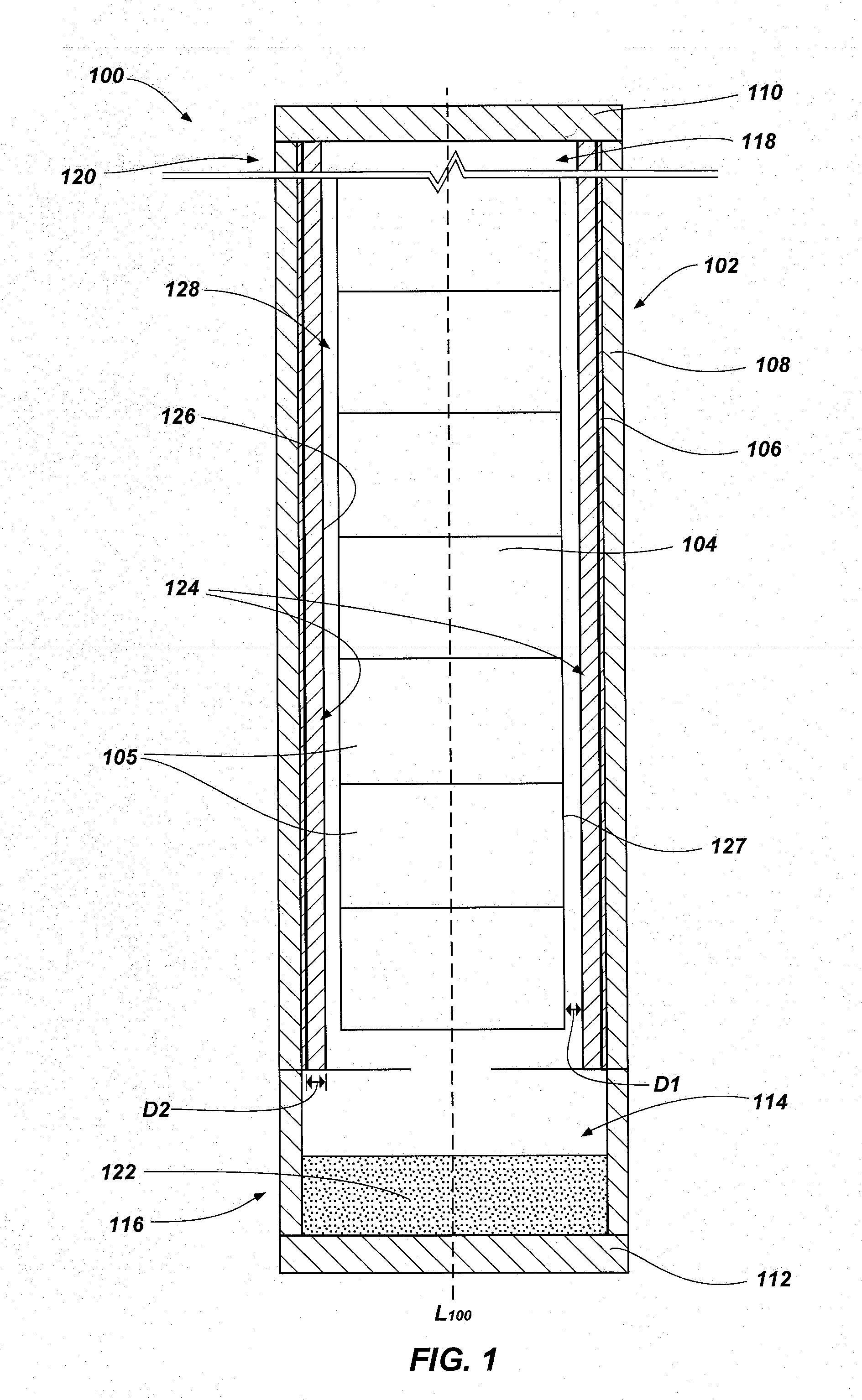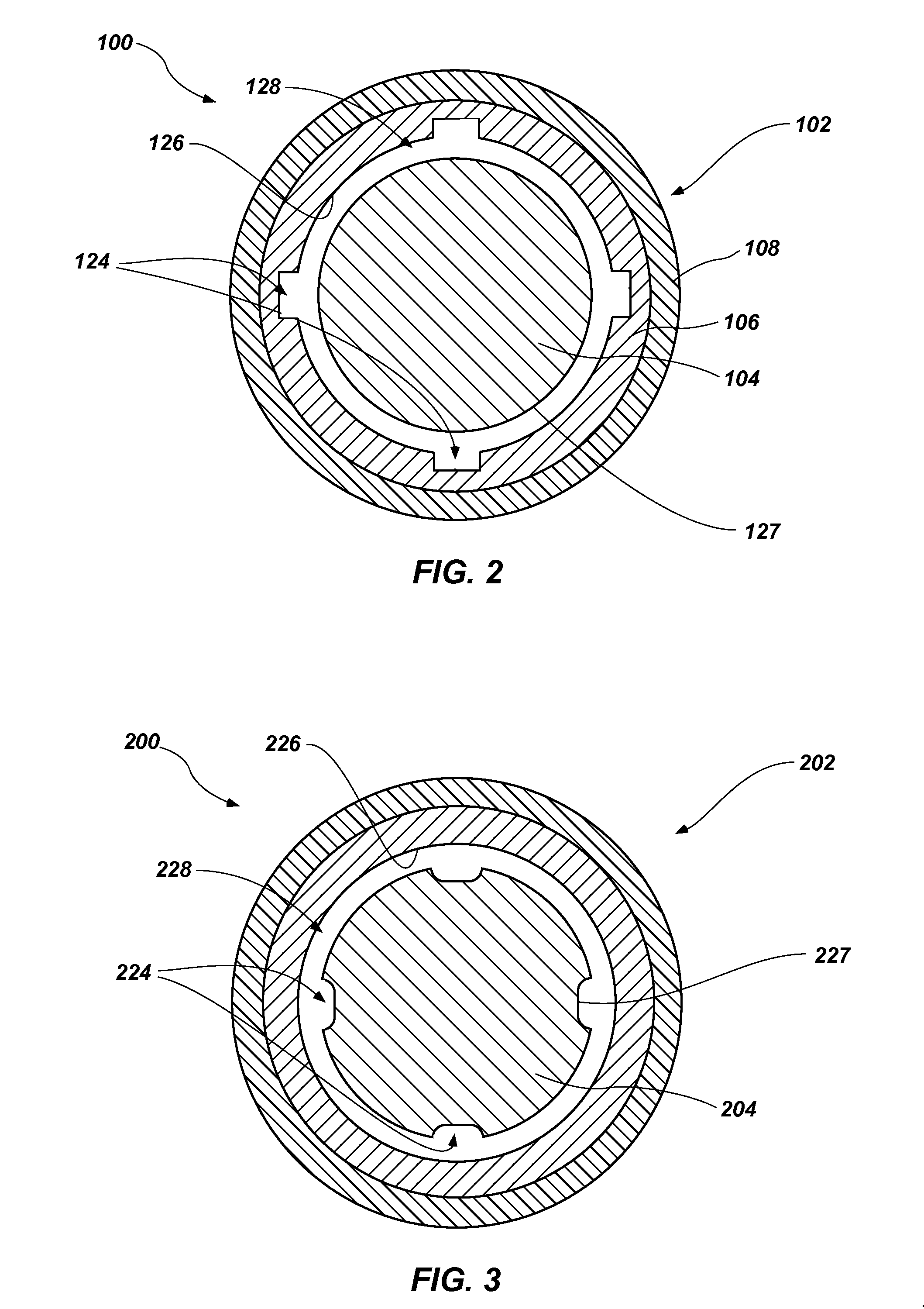Reactor fuel elements and related methods
a fuel element and reactor technology, applied in nuclear elements, greenhouse gas reduction, nuclear engineering, etc., can solve the problems of increasing power output per area, fuel cladding tubes are still susceptible to stress corrosion cracking, propagation of cracks and depressurization of fuel cladding tubes
- Summary
- Abstract
- Description
- Claims
- Application Information
AI Technical Summary
Benefits of technology
Problems solved by technology
Method used
Image
Examples
Embodiment Construction
[0015]In the following detailed description, reference is made to the accompanying drawings that depict, by way of illustration, specific embodiments in which the disclosure may be practiced. However, other embodiments may be utilized, and structural, logical, and configurational changes may be made without departing from the scope of the disclosure. The illustrations presented herein are not meant to be actual views of any particular fuel element or component thereof, but are merely idealized representations that are employed to describe embodiments of the present disclosure. The drawings presented herein are not necessarily drawn to scale. Additionally, elements common between drawings may retain the same numerical designation.
[0016]FIG. 1 is a cross-sectional side view illustrating an embodiment of a fuel element according to the present disclosure. As shown in FIG. 1, a fuel element 100 (e.g., a fuel rod) may include cladding (e.g., a cladding tube 102) and fuel 104 (e.g., nucle...
PUM
 Login to View More
Login to View More Abstract
Description
Claims
Application Information
 Login to View More
Login to View More - R&D
- Intellectual Property
- Life Sciences
- Materials
- Tech Scout
- Unparalleled Data Quality
- Higher Quality Content
- 60% Fewer Hallucinations
Browse by: Latest US Patents, China's latest patents, Technical Efficacy Thesaurus, Application Domain, Technology Topic, Popular Technical Reports.
© 2025 PatSnap. All rights reserved.Legal|Privacy policy|Modern Slavery Act Transparency Statement|Sitemap|About US| Contact US: help@patsnap.com



